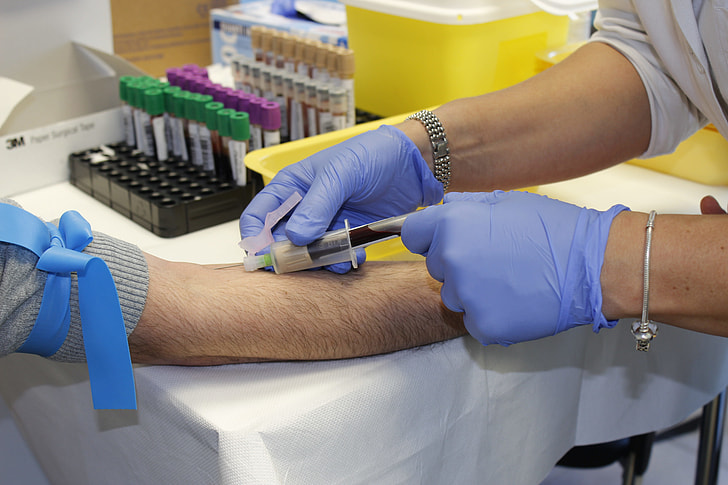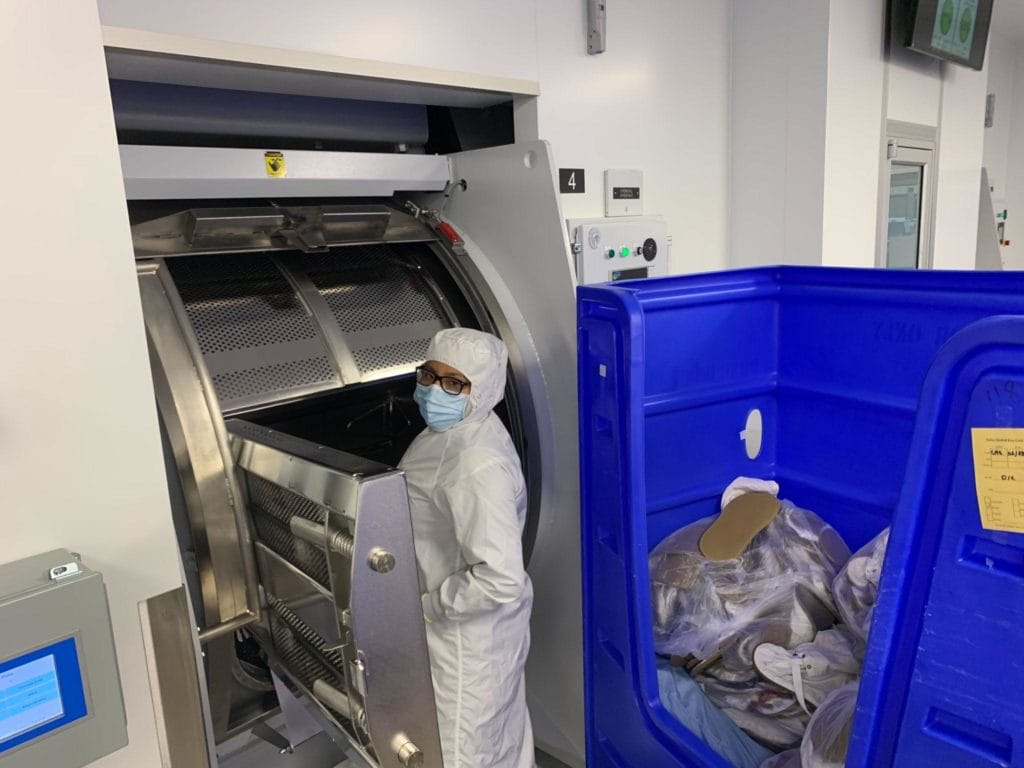
A major mining company successfully transitioned from conventional polyester and cotton uniforms to 100% recycled industrial fabrics, reducing textile waste, lowering carbon emissions, and achieving measurable total cost of ownership benefits. Key success factors included certified recycled materials (GRS), durability validation under abrasive mining conditions, worker comfort testing, supplier audits, and a phased implementation across sites.
1. Introduction
Mining operations are among the world’s most demanding industrial environments. Workers are exposed to:
- Abrasive surfaces
- Heat and dust
- Heavy equipment
- Chemical hazards
- Prolonged shifts in extreme conditions
These realities traditionally drive companies to use high-performance virgin polyester and cotton blends, designed to withstand mechanical damage and chemical exposure.
However, growing environmental commitments, investor ESG pressure, and the availability of recycled industrial-grade textiles have pushed some forward-thinking mining companies to explore sustainable uniform solutions—without compromising performance.
This case study details how Global MinTech Industries (GMI) (a global mid-tier mining group with 14,000 workers) became the first mining firm in their region to adopt 100% recycled fabrics for all workwear, achieving major sustainability and financial gains while maintaining compliance with ISO, EN, and local PPE safety standards.
2. Why Mining Companies Are Moving Toward Recycled Textiles
2.1 ESG and Shareholder Pressure
Mining companies face intense scrutiny from investors, regulatory bodies, and financial markets. Uniform procurement, though small compared to heavy equipment spending, is a visible and measurable ESG impact category.
Typical ESG Targets Influencing Apparel Procurement
- Reduction of Scope 3 emissions
- Lower water consumption
- Circular lifecycle adoption
- Better waste management metrics
- Supporting local or certified green supply chains
Switching to recycled fabrics directly improves several ESG audit indicators.
2.2 Rising Lifecycle Costs of Conventional Uniforms
Virgin fabrics in mining face high replacement rates due to:
- Abrasion damage
- UV breakdown
- Chemical exposure
- Frequent industrial washing
- Mechanical tearing
This leads to short product lifespans and high annual spend.
GMI’s internal audit found:
| Item | Data |
|---|---|
| Average uniform longevity | 7–9 months |
| Annual replacement rate | 1.7 uniforms per worker |
| Annual textile waste | 180 metric tons |
A shift to higher-durability recycled fabrics promised to reverse those numbers.
2.3 Public Reporting and Brand Image
Mining firms increasingly include:
- GRI reporting
- Carbon accounting
- Public sustainability commitments
- Community environmental impact disclosures
Uniform recycling programs are easy to:
- Measure
- Publish
- Showcase in sustainability reports
- Link to visible environmental outcomes
3. The Environmental Case for Recycled Fabrics
3.1 Sources of Recycled Materials
The GMI uniform redesign relied on Global Recycled Standard (GRS) certified inputs, including:
- Post-consumer PET bottles
- Industrial polyester scrap
- Recovered workwear offcuts
- Regenerated yarn from textile waste
All materials were tracked from:
- Collection
- Processing
- Spinning
- Weaving
- Garment manufacturing
3.2 Measured Environmental Reductions
Verified Through Third-party LCA Reports
| Environmental Metric | Virgin Polyester | 100% Recycled Polyester | Reduction |
|---|---|---|---|
| Energy Use per kg | 80 MJ | 32 MJ | –60% |
| CO₂ Emissions | 5.3 kg | 1.4 kg | –73% |
| Water Consumption | 17.5 L | 2.8 L | –84% |
Across 14,000 workers, GMI’s annual savings equated to:
- ~8,200 tons of CO₂
- ~95% reduction in textile waste disposal
- ~1.1 million liters less water consumed
4. Industry Conditions That Make Mining a Fabric Stress Test
Mining garments require:
4.1 Abrasion Resistance
Workers encounter:
- Sharp railings
- Conveyor belt edges
- Ore residue
- Rusted surfaces
- Mechanical wear from tool belts
4.2 UV Exposure
Workers in open-pit mines may face UV indices as high as 14.
4.3 Heat and Sweat Management
Daily shifts reach:
- 50°C drill fields in Australian mines
- Humid underground shafts
- Intense sweating due to PPE + flame-resistant outer layers
4.4 Frequent High-Temperature Industrial Laundering
Mining uniforms are:
- Washed 120–160 times per year
- Exposed to disinfectants, alkalis, bleach, and mechanical agitation
4.5 Compliance Requirements
Depending on region:
- EN ISO 11612 – Heat/flame hazards
- ISO 15797 – Industrial washing
- EN 20471 / AS/NZS 4602 – Hi-Vis standards
- FR certifications for smelting or pyrometallurgy areas
Recycled fabrics needed to equal or outperform virgin fabrics across these categories.
5. The Transition Strategy: From Board Approval to Rollout
GMI used a structured four-phase transition method:
Phase 1 – Requirements Analysis (3 months)
Key Questions Addressed
-
Where do garments fail currently?
- 62% failures from abrasion
- 27% stitching tearing
- 9% reflective tape delamination
-
Which workers have the hardest wear profiles?
- Underground mechanics
- Rail loader teams
- Crusher operators
- Open-pit drilling crews
-
Which certifications were non-negotiable?
- ISO 11612
- EN 20471 / ANSI 107
- GRS recycled material traceability
This stage established baseline technical expectations for suppliers.
Phase 2 – Supplier Shortlisting and Auditing (4 months)
Required Credentials
Suppliers needed to provide:
- GRS certification
- ISO factory compliance
- Documented supply chain traceability
- Testing data from:
- SGS
- Intertek
- Bureau Veritas
Audit Checklist
| Area | Checklist Focus |
|---|---|
| Environmental controls | Water recycling, emissions, waste treatment |
| Worker welfare | Wages, safety, dormitory conditions |
| Traceability | Batch-level recycled yarn certification |
| Quality systems | Random inspection protocols, FR and HI-VIS tape life testing |
Only 3 of 11 suppliers passed all requirements.
Phase 3 – Fabric Engineering and Field Testing (6 months)
Two core fabric systems were developed:
1. Hi-Vis Recycled Polyester Ripstop
- 200–250 GSM
- Dual-weave reinforcement
- UV-stabilized dyes
- EN 20471 compliant
2. Recycled Polyester-Modacrylic FR Blends
- For hot-work environments
- Lower shrinkage under flame exposure
- Comparable arc-flash protection
Field Trial Groups
Samples were issued to 418 workers across 5 mines, including:
- Materials handling
- Mobile plant mechanics
- Haul truck drivers
- Underground technicians
- Crane operators
Worker Feedback
| Evaluation Category | Score Increase vs Old Uniform |
|---|---|
| Breathability | +41% |
| Soft-hand comfort | +62% |
| Drying speed | +33% |
| Perceived durability | +44% |
Industrial washing trials validated:
- 0 failures after 150 wash cycles
- Reflective tape still ≥90% luminance
- No fabric tearing beyond acceptable ISO limits
Phase 4 – Staged Rollout (12 months)
Deployments followed a region-by-region plan:
- Underground mines
- Smelting plants
- Open-pit operations
- Administration
- Global remote satellite sites
Within 14 months, 100% adoption was completed.
6. Cost, ROI, and Total Cost of Ownership Analysis
6.1 Per-Garment Cost Comparison
| Category | Virgin Fabric Garments | Recycled Fabric Garments |
|---|---|---|
| Unit cost | $39 | $51 |
| Average lifespan | 7.8 months | 15.2 months |
| Replacement rate | 1.7/year | 0.79/year |
Even with higher unit cost, total annual cost per worker dropped:
Old system:
1.7 × $39 = $66.3 per worker per year
New system:
0.79 × $51 = $40.3 per worker per year
Annual saving per worker = $26
Across 14,000 staff:
$26 × 14,000 = $364,000 annual savings
6.2 Indirect Savings
Reduced Textile Waste Fees
- Landfill and environmental handling cost dropped by ~75%
Lower Incident-Related Clothing Failure
FR and cut-resistant outerwear saw:
- 42% fewer garment failures in hot-work zones
- Lower downtime during uniform changeouts
Improved Worker Satisfaction
Retention improvement in long-shift high-stress environments was +8% YoY, partially attributed to:
- Better comfort
- Lower heat stress
- Faster drying during wet shifts
7. Challenges During the Transition
7.1 Misconception: “Recycled Means Weak”
Many engineers initially believed recycled fibers were:
- Weaker
- Less durable
- Not suitable for welding or mechanical abrasion work
Mitigation
Performance data was shared early:
- Tear strength
- Martindale abrasion ratings
- UV degradation curves
- Industrial laundry life cycle numbers
Confidence increased after real-world test runs.
7.2 Supply Chain Traceability Was Complex
Recycled fabric supply chains may include 3–10 upstream nodes:
- Bottle collection
- Pelletization
- Chips
- Fiber extrusion
- Weaving
- Dyeing
- Garmenting
The solution:
- Batch-level GRS traceability
- Supplier digital serialization
- Production QR code labels on every lot
7.3 Training End-users
Workers needed onboarding in:
- Proper sizing
- Recommended wash temperatures
- Avoiding open-flame exposure in non-FR areas
A video-based LMS module cut deployment training from 2 months to 3 weeks.
8. Standard Compliance and Testing Methods Used
8.1 EN / ISO Standards Achieved
| Standard | Purpose |
|---|---|
| EN ISO 11612 | Heat and flame protection |
| EN 20471 / ANSI 107 | Hi-Visibility performance |
| ISO 15797 | Industrial laundry performance |
| GRS Certification | Recycled materials traceability |
8.2 Laboratory Testing Metrics
Abrasion Resistance (Martindale)
- Targets exceeded by +38–60% over virgin fabrics
Tear Strength
- No catastrophic failures during test cycles
Colorfastness
- Maintained high visibility under:
- UV
- Sodium hypochlorite washing
- Sweat exposure
Reflective Tape Adhesion
- Retained >90% reflectivity after 150 washes
9. Worker Case Studies by Job Role
9.1 Underground Mechanics
Problem (Old System)
- Sharp edges and steel contact shredded sleeves in weeks
Result (Recycled System)
- Ripstop reinforcement increased garment life from:
- 2.4 months → 7.1 months
9.2 Haul Truck Drivers
Problem
- Cutting heated cabins caused heat stress and sweating
Result
- New fabric dried 38% faster
- Worker comfort scores up +52%
9.3 Electrical Technicians (FR Garments)
Requirement
- Arc flash protection equal to or better than previous garments
Result
- New garments achieved:
- Higher after-flame performance
- Lower shrink percentage
- Comparable arc thermal performance values
10. Lifecycle Management and End-of-Life Recovery
10.1 Garment Take-Back System
Employees returned:
- Worn garments
- Damaged clothing
- Pre-recycled uniforms
Returned uniforms were:
- De-trimmed
- Polymer-recovered
- Turned back into recycled yarn
This created a true industrial circular loop.
Year 1 Results
- 67% recovery rate
- Expected to reach 90% within two years
10.2 Digital Tracking
Each garment carried:
- A serialized QR code
- Production batch data
- Washing count logs
- RFID for large-site management
Procurement teams could monitor real-time:
- Wear rates
- Failure modes
- Replacement timing
- CO₂ emission offsets
11. Best Practices for Mining Firms Wanting to Adopt Recycled Workwear
1. Don’t Start with Procurement—Start with Engineering
Define:
- Mechanical stress thresholds
- UV resistance requirements
- Chemical exposure categories
- Expected laundry cycles
2. Run Real-world Trials
Lab numbers matter, but:
- Belt edges
- Exhaust manifolds
- Underground rails
are the real judges of performance.
3. Require Test Data, Not Sales Promises
Ask vendors for:
- Third-party test reports
- Traceability documentation
- Washing simulation results
4. Measure Total Cost of Ownership
A $10 saving today can mean:
- $40 extra in replacement and disposal later
5. Involve Workers Early
If workers like the garment:
- Adoption happens
- Field complaints disappear
- Procurement interference drops
12. Conclusion
GMI proved that 100% recycled industrial fabrics can outperform virgin textiles in mining, delivering:
- Lower annual cost
- Measurable CO₂ and water reductions
- Reduced waste
- Improved ESG reporting credibility
- Higher worker comfort and retention
- Circular lifecycle management
What once sounded unrealistic—“recycled fabrics in mining”—is now a validated solution with:
- Verified test data
- Real deployment outcomes
- Lower lifecycle costs
- Stronger garment performance in multiple job categories
13. Need Help Sourcing Recycled PPE and Workwear?
If you want assistance with:
- GRS-certified supply chains
- Workwear development
- Lifecycle and ROI calculation
- Performance testing
- Full circular recovery programs
Contact:
Workwear Solutions
📧 [email protected]
🌐 www.workwearsolutions.net
Zion Zhang
Recent Posts
 From Silver Ions to Copper Threads: Comparing Antimicrobial Technologies2025年11月20日Modern food processing and pharmaceutical manufacturing […]
From Silver Ions to Copper Threads: Comparing Antimicrobial Technologies2025年11月20日Modern food processing and pharmaceutical manufacturing […] Antimicrobial Fabrics: The Hidden Hero in Food & Pharma PPE2025年11月20日Food and pharmaceutical production environments demand the […]
Antimicrobial Fabrics: The Hidden Hero in Food & Pharma PPE2025年11月20日Food and pharmaceutical production environments demand the […] Europe’s Circular Workwear Trend: What Emerging Markets Can Learn2025年11月19日The European workwear industry is increasingly embracing […]
Europe’s Circular Workwear Trend: What Emerging Markets Can Learn2025年11月19日The European workwear industry is increasingly embracing […] Why ESG Standards are Becoming a Must for Global PPE Projects2025年11月19日Global PPE projects are increasingly under scrutiny for […]
Why ESG Standards are Becoming a Must for Global PPE Projects2025年11月19日Global PPE projects are increasingly under scrutiny for […] Circular Workwear Programs: How Rental & Recycling Models Cut Waste2025年11月19日Circular workwear programs are transforming the traditional […]
Circular Workwear Programs: How Rental & Recycling Models Cut Waste2025年11月19日Circular workwear programs are transforming the traditional […] Recycled Polyester & rPET Workwear: Green Solutions for 20252025年11月19日The global transition toward circular manufacturing and […]
Recycled Polyester & rPET Workwear: Green Solutions for 20252025年11月19日The global transition toward circular manufacturing and […]
CONTACT US
- Feel free to contact us any time. We will get back to you as soon as we can!
- +86-17303331701
